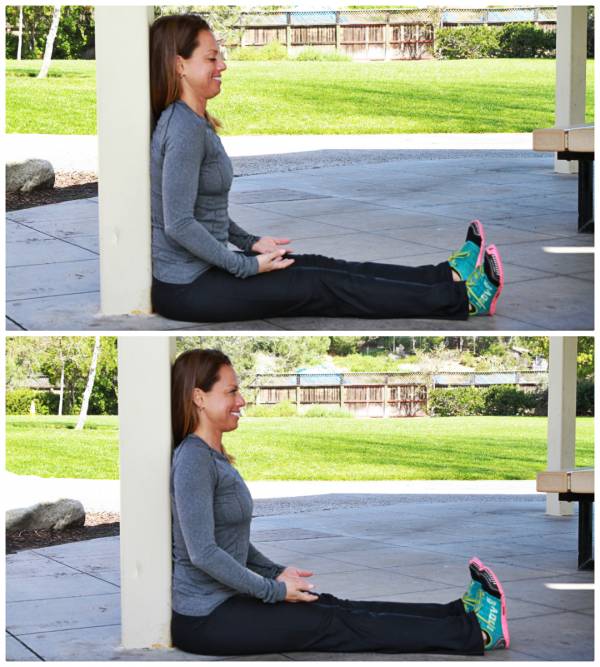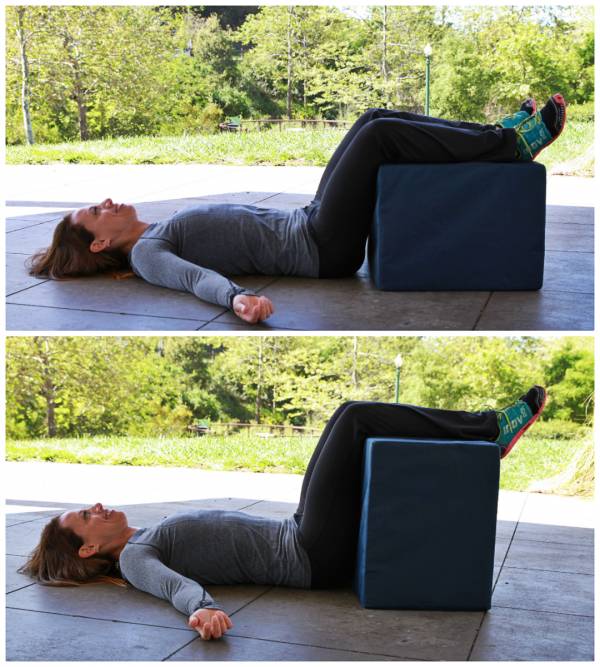If you are dealing with hip pain, I want you to know I have been there myself. I know firsthand how much life can really suck when your hip just isn’t feeling right, or isn’t working the way that it should. I know that chronic hip pain can put a damper on everything else in life. When my hip wasn’t working, my life wasn’t working either.
When I was 27 years old, I couldn’t walk because of excruciating pain in my left hip. I never had a fall or an accident. The hip pain just started one day when I was out for a run, and continued to get worse over time, until eventually the pain levels were a constant eight out of ten. I was diagnosed with femoral acetabular impingement (FAI) with labral tears in my hip. The worst part of it all was spending a short period of time in a wheelchair, and going through surgery to my hip.
Today, seven years later, I am fully recovered and my hip is pain-free. It took a great deal of work on my part to coax my shoulders, hips, knees, and ankles back to a better alignment. The biggest discovery for me as I went through the healing process was that my hip problem wasn’t just a hip problem, but rather a total-body misalignment problem.
Pain Does Not Occur in Isolation
What I want to offer you in this article is a possible shift in perspective; a shift from focusing on the symptom or the site of your pain, to paying attention to the overall alignment and function of your entire body. The exercises that I am presenting to you in this article have very little to do with the hip itself, and a lot to do with the position of the shoulders, spine, hips, knees, and ankles.
The human body is designed to work best when its eight major load bearing joints, the shoulders, hips, knees, and ankles, are properly aligned and balanced. The exercises in this article will begin to address some of the underlying causes of hip pain by restoring balance to the body.
It was life-changing for me when I first tried these exercises and experienced immediate relief in my pain. I’m not saying that you will have the same experience. You might, but this is not a quick fix for most people. The purpose of this article is for you to give these exercises a try, and notice what changes within your body. You may experience an immediate decrease in pain, or you may experience something else, like an improvement in your balance, or maybe even a release in another part of your body that was tight.
What comes next in the healing process will be up to you, but for now, give these a try.
Counter Stretch
Most of our everyday movements, such as driving and computer work, keep our arms and legs in a bent position. This exercise promotes function by allowing the upper body to straighten, while stretching and lengthening the back of the hips and legs. The end result is the pelvis will be in a better, more balanced position.
Left: incorrect. Hips forward, back rounded. Right: correct. Low back is arched, hips are back, and spine is fully extended.
Stand facing a table or counter that is about waist- to chest-high. Place your hands on the table or counter top and walk your feet back so that your feet are under your hips. Look at your feet and make sure they are straight, or slightly pigeon-toed (this is really important!). Kick your hips back to place an arch in your lower back, and move your chest down towards the floor. Keep your elbows locked out and tighten your quads. Breathe and hold for one minute. Make sure to keep the weight distribution in your feet equal.
If done properly, this exercise will promote extension in the thoracic spine, which in many people can be hunched or rounded forward in flexion with kyphosis.
Mistakes to Avoid:
- Don’t do this exercise with you back in a rounded position. If you are having a hard time placing an arch in your low back, find a higher surface to place your hands on. The higher the surface, the easier it will be to place and keep the arch in the low back.
- Don’t hold your breath. Breathe deeply throughout the exercise.
Sitting Floor
This exercise activates posture muscles all the way from your feet to your neck. It allows the mid-to-upper back to lengthen, while stabilizing the hips and legs. After doing this exercise you will feel taller, lighter, and overall you will feel better. Your hips and pelvis will be able to function more optimally with the upper back and shoulders in a better position.

Top: incorrect. Shoulders are hunched, toes are falling out. Bottom: correct. Shoulders are down and back, toes pointed up.
Sit against a wall with your legs straight out in front of you, and your feet hip-width apart. Your buttocks and upper back should be against the wall. Your tailbone should feel snugly wedged up against the wall. Place your hands on your lap, with palms up. Squeeze your shoulder blades together and hold. Don’t lift the shoulders; only squeeze them back and down. Tighten your thighs and flex your feet back toward you, and hold. The emphasis is keeping your shoulder blades pulled together, thighs tight and feet flexed back. Relax your stomach muscles, and breathe deeply through your belly. Hold for three minutes.
Mistakes to Avoid:
- Don’t let your feet turn out. A good way to know if your feet are straight is to first point your knee caps straight toward the ceiling.
- Don’t round your shoulders forward or hunch to try to get into this position. Be sure to pull your shoulders gently down and back.
- Don’t hold your breath, and don’t hold tension in your belly. Instead, breathe and relax your belly.
- Don’t force your head to the wall if it means you’re cocking your head back at an angle. It is okay for your head to be away from the wall to start, if this feels more natural for you. When the position of your upper back improves as a result of doing these exercises, your head will naturally come back to meet the wall.
Static Back
This exercise will allow the pelvis, spine, and shoulders to settle evenly into the floor. Although passive, this exercise allows gravity to work with us to balance the body. Gravity will act equally on the right and left halves of the body in this position, leaving your body more balanced overall, and with less pain.

Top: incorrect. Legs are not at 90° and knees are falling out. Bottom: correct.
Lie on your back with your legs up over a block or chair so your hips and knees are at 90 degrees. Place your arms out to the sides at 45 degrees from your body, with your palms up. Relax your upper back, and notice as your low back flattens to the floor evenly from left to right. Breathe into your belly. Hold this position for five minutes.
Mistakes to Avoid:
- If your knees are falling out to the sides, this means your surface is too low. Try stacking blankets or towels on your couch or chair to create a surface that is the correct height.
- Have someone snap a photo of you from the side, and look at the angle of your knee. If your femur (thigh bone) is slanted, this means you do not have a 90-degree angle at your knee and hip. Your femur should be straight up and down (vertical), as shown in the photo on the right.
- Do not hold your phone over your face and text your friends or read a book during Static Back. Your shoulders must be relaxed into the floor!
Create a Daily Alignment Practice
I recommend doing these exercises daily, first thing in the morning, for the best results. Be sure to always listen to your body, and if an exercise or position doesn’t feel right to you, skip it and come back to it when you’re ready.
I hope you have enjoyed these exercises, and that this shift in perspective to a total-body alignment overhaul versus focusing solely on the hips leads to a successful healing process for you.
Disclaimer: The information contained in this article is for informational purposes only. The purpose of this article is to promote broad reader understanding and knowledge of various health topics. It is not intended to be a substitute for professional medical advice, diagnosis or treatment. Always seek the advice of your physician or other qualified health care provider with any questions you may have regarding a medical condition or treatment and before undertaking a new health care regimen, and never disregard professional medical advice or delay in seeking it because of something you have read in this article.






